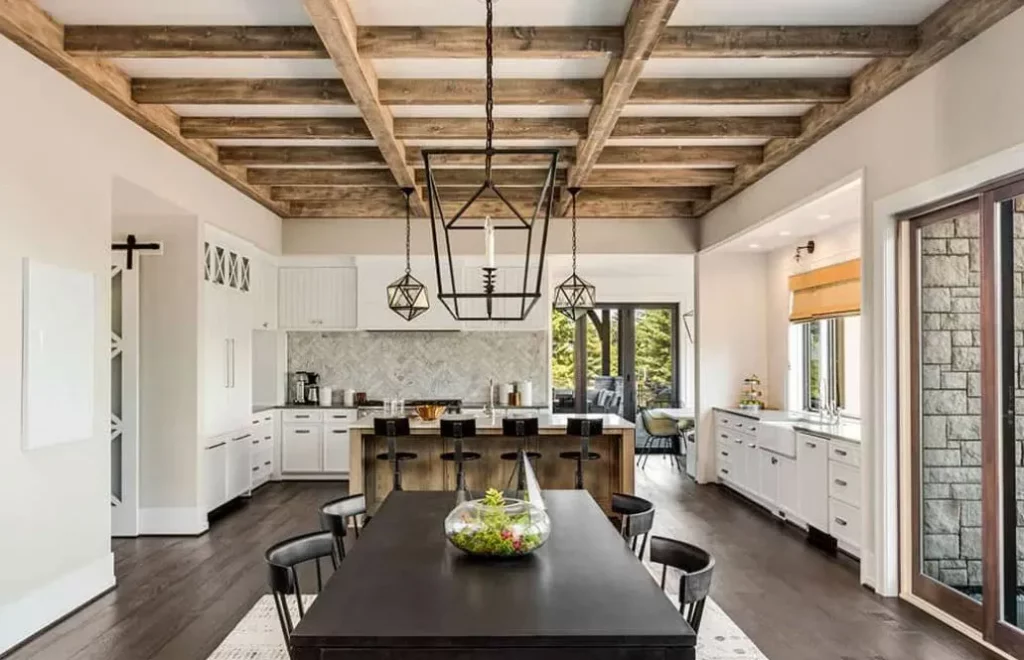Drawing upon the comforting nostalgia of Laura Ingalls Wilder’s ‘Little House on the Prairie,’there is an undeniable allure to the farmhouse style that continues to captivate contemporary homeowners. This architectural and interior design approach, which emphasizes simplicity, comfort and utility, has roots in American rural life. However, its appeal has transcended geographical boundaries and time periods. The farmhouse style embodies a lifestyle that values connection—with nature, with history, and most importantly, with one another.
In recent years, there has been a marked resurgence in interest towards embracing this enduring aesthetic in remodeling projects. As reported by several industry surveys and studies, homeowners are increasingly favoring the rustic charm of farmhouses over more modern or minimalist designs. This growing trend can be attributed not only to aesthetic considerations but also to the desire for homes that evoke warmth, authenticity and a sense of belonging.
In this article we will explore these trends further by providing insights into understanding the nuances of farmhouse style and practical steps towards achieving a successful farmhouse remodel.
Understanding Farmhouse Style
Farmhouse style, often characterized by its unique blend of rustic charm and modern simplicity, has become a notable trend in home remodeling, coincidentally aligning with the growing preference for designs that evoke a sense of warmth and comfort.
This aesthetic is typically defined by its use of natural materials such as wood and stone, combined with neutral color palettes that include shades like beige, cream, white, and soft pastels.
Additional elements may consist of open shelving units for displaying vintage or antique items, shiplap walls for added texture and depth, free-standing bathtubs in bathrooms for a touch of elegance amidst the raw beauty.
Delving deeper into this style reveals an intriguing fusion of function and form where each element serves a purpose while contributing to the overall aesthetics.
For instance, large farmhouse sinks are not only practical for washing dishes but also serve as focal points in kitchens due to their prominent size and traditional design.
Similarly, barn doors offer an efficient way to divide spaces without occupying too much floor space yet adding to the rural ambiance through their distinctive appearance.
The integration of these various components results in creating spaces that feel invitingly lived-in yet elegantly timeless.
Analysing this remodeling trend further exposes underlying societal preferences towards returning to simpler times when homes were not merely places to live but served as sanctuaries offering solace from outside hustle-bustle.
The farmhouse style’s emphasis on natural materials coupled with its subtle sophistication resonates deeply with individuals yearning for authenticity amid today’s increasingly artificial world.
Therefore it can be argued that the popularity of farmhouse-inspired interiors reflects more than just an architectural trend; it symbolizes a collective desire for community-centric living spaces rooted in tradition yet adaptable enough to meet contemporary needs.
Steps to a Farmhouse Remodel
Implementing a rustic aesthetic in residential spaces involves several critical steps.
The first one is to carry out an assessment of the existing house structure and interior design. This step is crucial as it aids in identifying aspects that can be retained, altered, or entirely discarded in order to achieve the desired farmhouse look. It may involve consulting with remodeling experts who have prior experience with farmhouse style conversions, so that they can provide insights into material suitability, structural changes needed, and potential cost implications.
The second step involves drafting a detailed remodeling plan based on the assessment findings. The plan should clearly outline the materials to be used, such as reclaimed wood for flooring or exposed brick for walls, replacement of modern fixtures with vintage ones, color schemes that reflect natural hues and tones common in farmhouses such as earthy browns and soft whites among others. This stage may also include drawing up detailed layouts for each room incorporating typical farmhouse elements like open shelves in kitchens or clawfoot tubs in bathrooms.
The final stage of a farmhouse remodel entails executing the plan under close supervision to ensure adherence to quality standards and maintaining consistency with the chosen style throughout all rooms. Careful attention must be paid during this phase to details such as distressed finishes on furniture items or installing shiplap walls accurately which are quintessential elements of the farmhouse aesthetic. Simultaneously mitigating any unexpected challenges that arise while staying within budgetary constraints forms an integral part of this process too.
Thus through careful planning and execution a residential space can successfully embrace these popular rustic trends bringing warmth and simplicity associated with country living into urban homes.
Simplicity Redefined: The Art Of Minimalist Home Remodeling
Building Greener Tomorrows: Eco-Friendly Home Remodeling In Action


